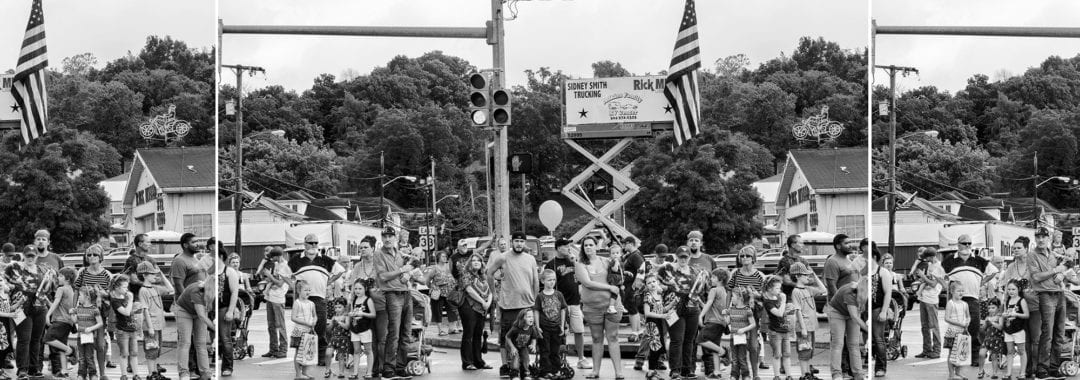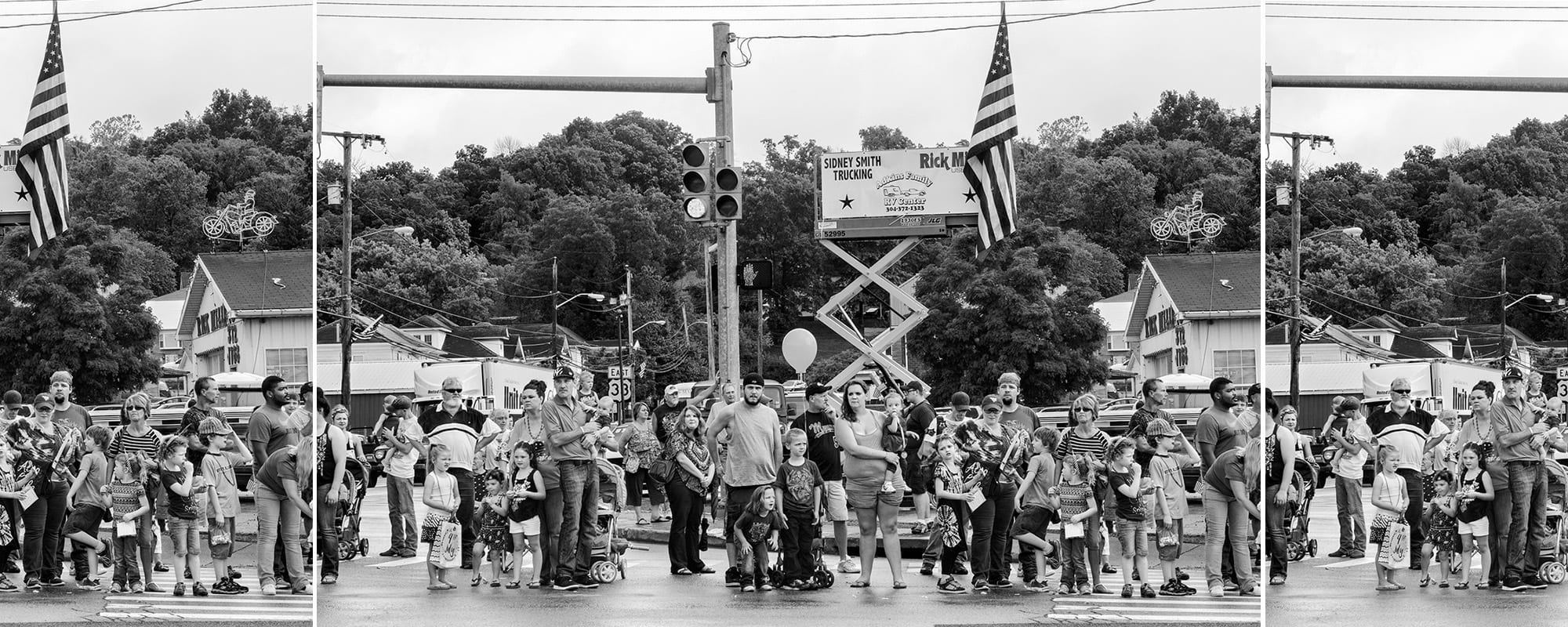“Every image poses the question of American identity not just from the standpoint of our present reality, but from the playbook of iconic images – most of them from the twentieth century – that make up the history of American photography.”
It’s been nearly half a year since I interviewed George Georgiou about his book Americans Parade. When we spoke in Paris in November 2019, shortly after the book’s release and its subsequent nomination for the Aperture Photobook of the Year award, the world was a very different place. The UK was getting ready to leave the European Union; America was gearing up for the primaries. Six months and one global pandemic later, the questions around American identity, space, and politics that Georgiou explores in Americans Parade are especially poignant at a time when we’re doing everything we can to keep our distance from one another.
Georgiou first travelled to America in 2011, with his partner and fellow photographer Vanessa Winship. The pair arrived in the country at a turbulent time. The Occupy movement was gathering momentum. In February of 2012, the death of Trayvon Martin at the hands of an armed civilian fuelled the collective rage that would culminate in the formation of the Black Lives Matter network. Initially, the two were working on separate projects, but early on, Georgiou decided to take time out from his own work to assist Winship. Stepping out from behind the camera gave him time to reflect on the racial and economic injustice that he was witnessing. If I’d started to make the work straight away, I think the anger might have got in the way a little bit. It’s very hard to make a good piece of work in a foreign country with anger.
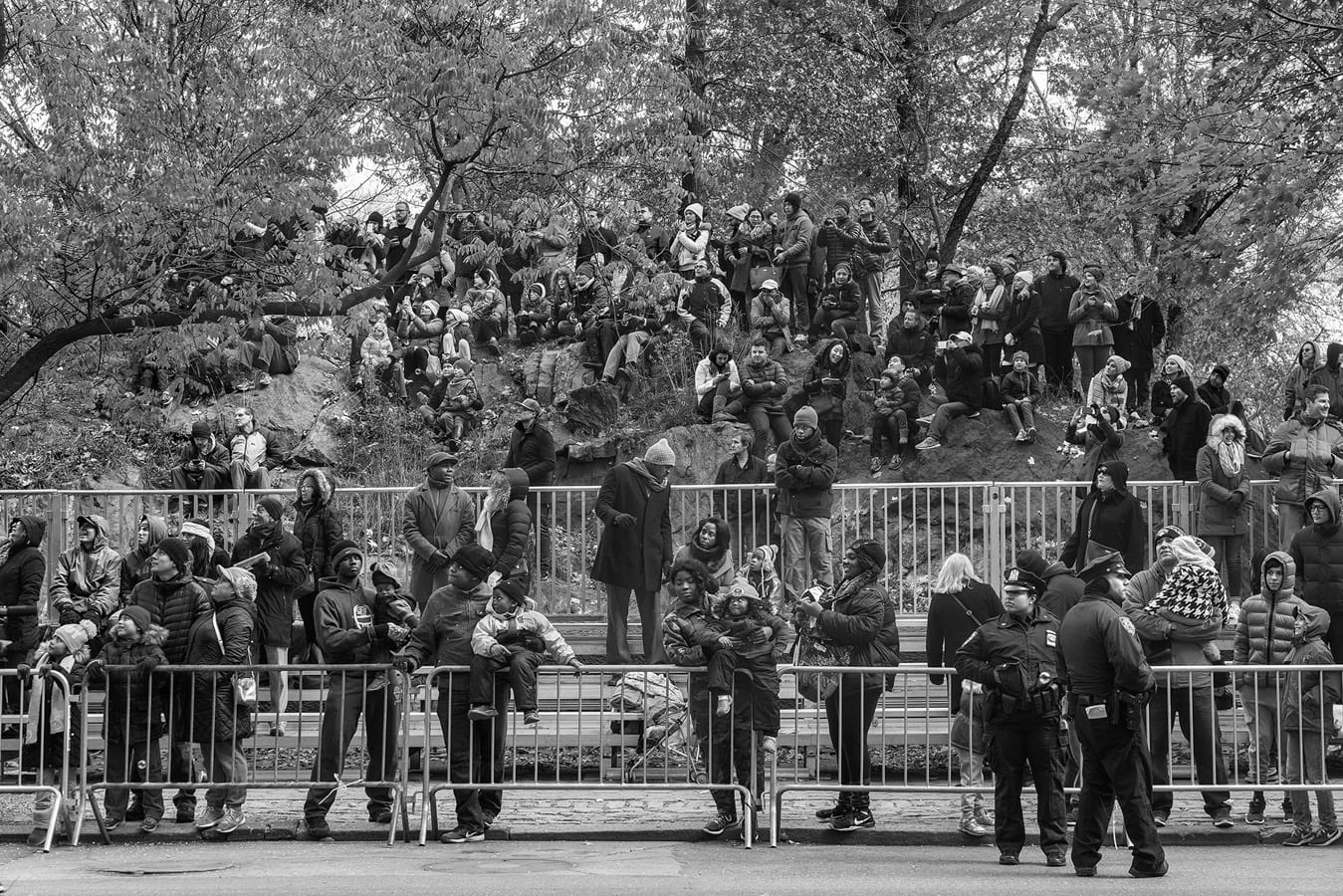
Americans Parade is an exploration of American identity, and of the way that the politics of race and class are played out in space. I’ve always been interested in the politics of the street, and public space, how we operate within that kind of space, and the way that the individual presents themselves within that. For most Americans, the road is a symbol of freedom, but as a visitor to the country, Georgiou saw it differently. I was thinking about the society that the road has created in terms of the way that everything is structured around the car. All of the town planning is designed around the same zoning – residential, retail, and industrial. Apart from a few places, every town is pretty much like that. In many American cities, the road marks an unofficial boundary between poverty and privilege. From the confines of the automobile, unfamiliar places are often perceived through a filter of hearsay and fearful speculation. When you’re driving past these neighbourhoods, your vision of them is through a screen. You have very little contact with the people in the neighbourhood. So you build up this picture which is a fantasy – it’s just through reputation that you know what a neighbourhood is. Many of the places that Georgiou visited were preceded by their bad reputations. The Martin Luther King neighbourhood in Jackson Mississippi has one of the highest crime rates in America. They say that the only people on the street are mad or bad. So you’re looking at someone hoping they’re just going to be okay, a normal person. It was interesting, because it challenged my own liberal views. In London it wouldn’t cross my mind.
The seed for Americans Parade was planted on the day that Georgiou and Winship travelled to a location and found a parade in progress. There were people out on the streets, out in their gardens making barbeques, suddenly you saw this whole community. It was really alive. When we went to a Trayvon Martin gathering there was also a parade, and I started to make some images at that gathering. … I knew exactly what I wanted to do. I wanted to look at these communities, I wanted to see the communities on the street, and I wanted to talk about these demographics, and segregation, not just in terms of ethnicity, but also of class and income as well.
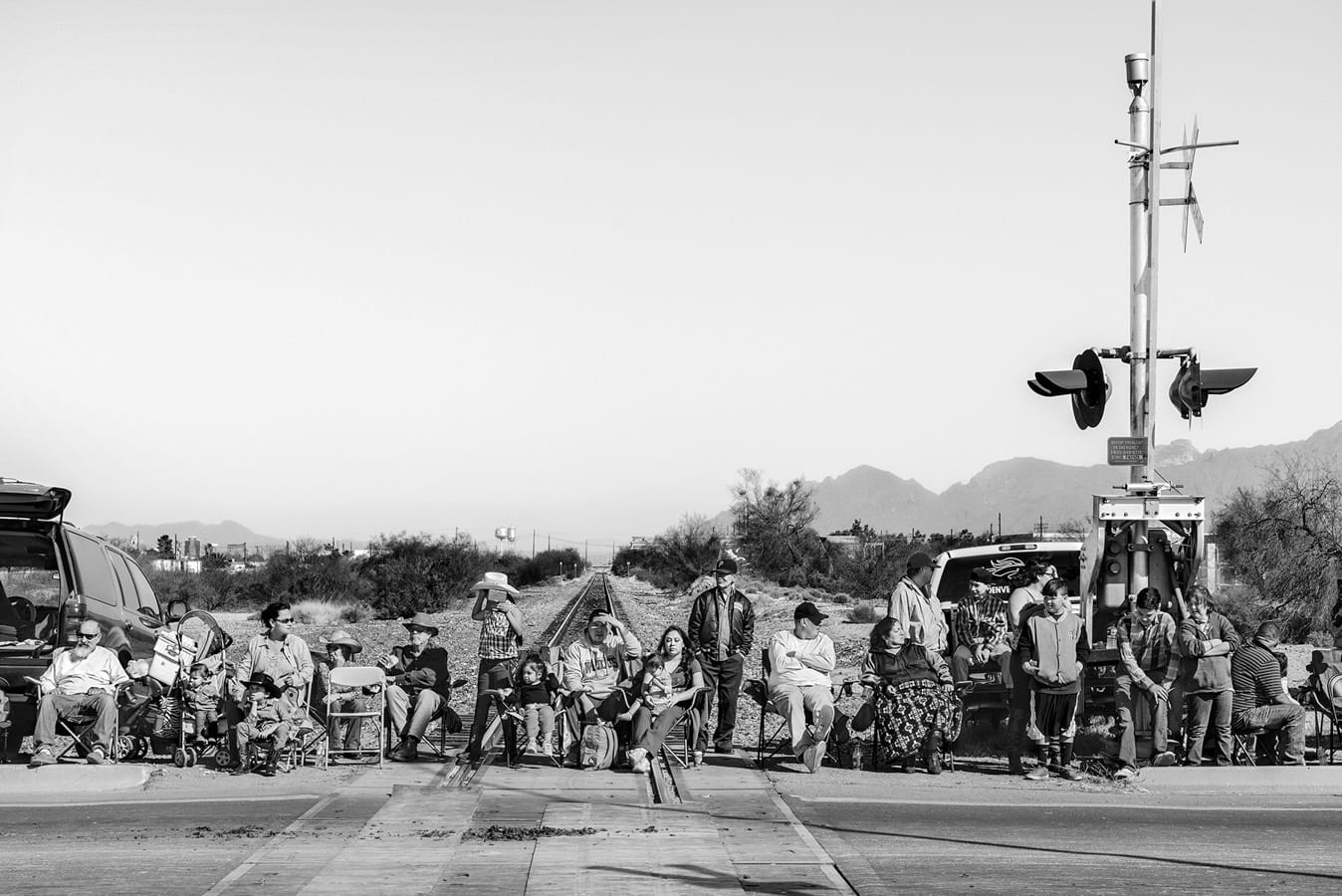
“A nation increasingly locked away in its cars, isolated behind its screens, estranged from its neighbours, seems to have lost sight of one of its most basic civil liberties: the freedom of assembly as it was set out in the Bill of Rights. Americans Parade shows how insidiously this freedom has been compromised – how something as fundamental as occupying space has become a matter of entitlement, set out along the lines of race and class.”
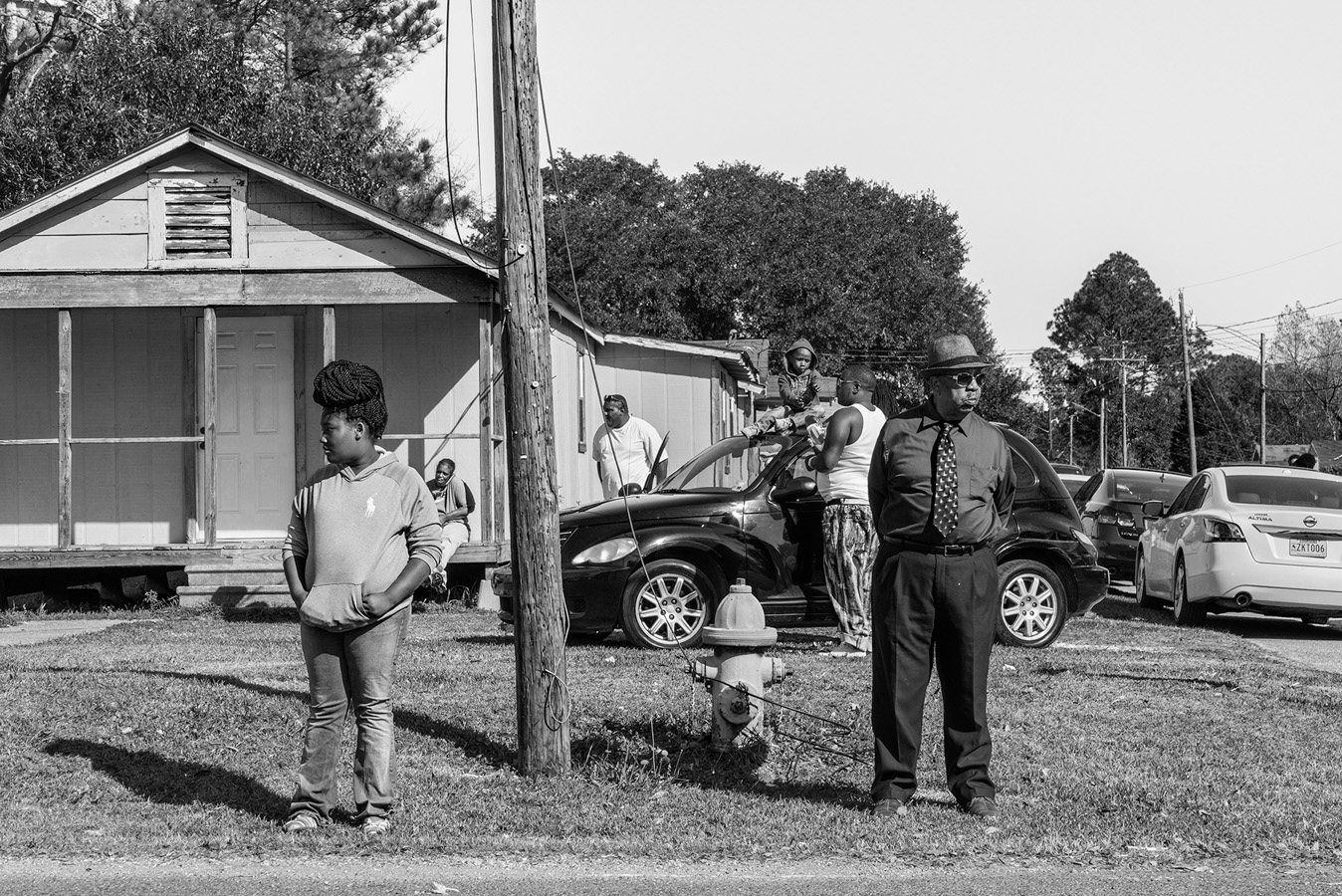
Georgiou spent close to a year photographing parades all across America. He visited large cities and small towns, walking the length of every parade he could find, waiting for gaps between the floats to photograph the crowds on the opposite side of the street. The resulting images are immensely detailed. You need a long, slow look to get the measure of them: the landscapes, the pictures-within-pictures, the glances exchanged between spectators, their clothes, their gestures, their expressions. It also takes time to fully appreciate the range and depth of photographic tradition packed into each one. Every image poses the question of American identity not just from the standpoint of our present reality, but from the playbook of iconic images – most of them from the twentieth century – that make up the history of American photography.
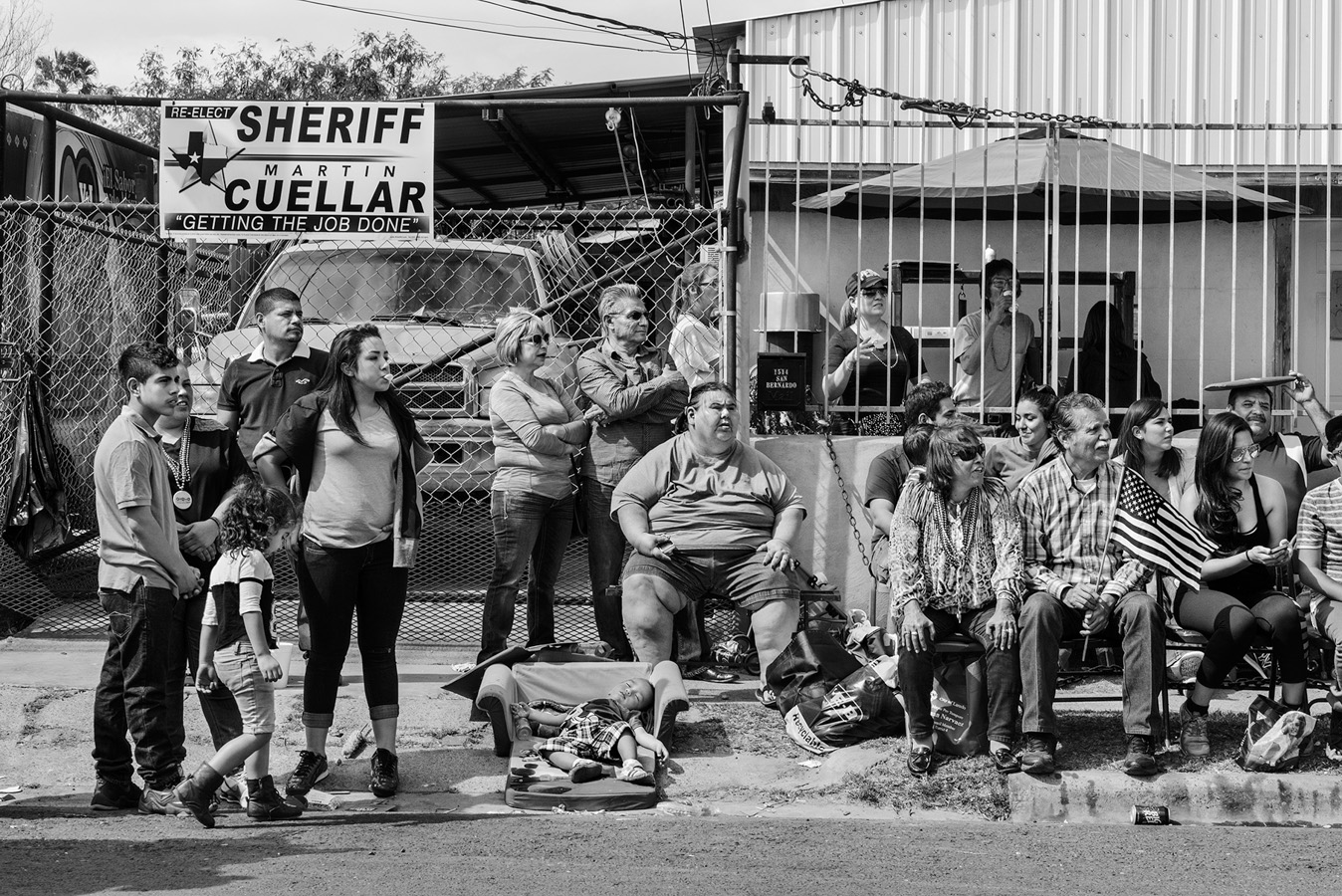
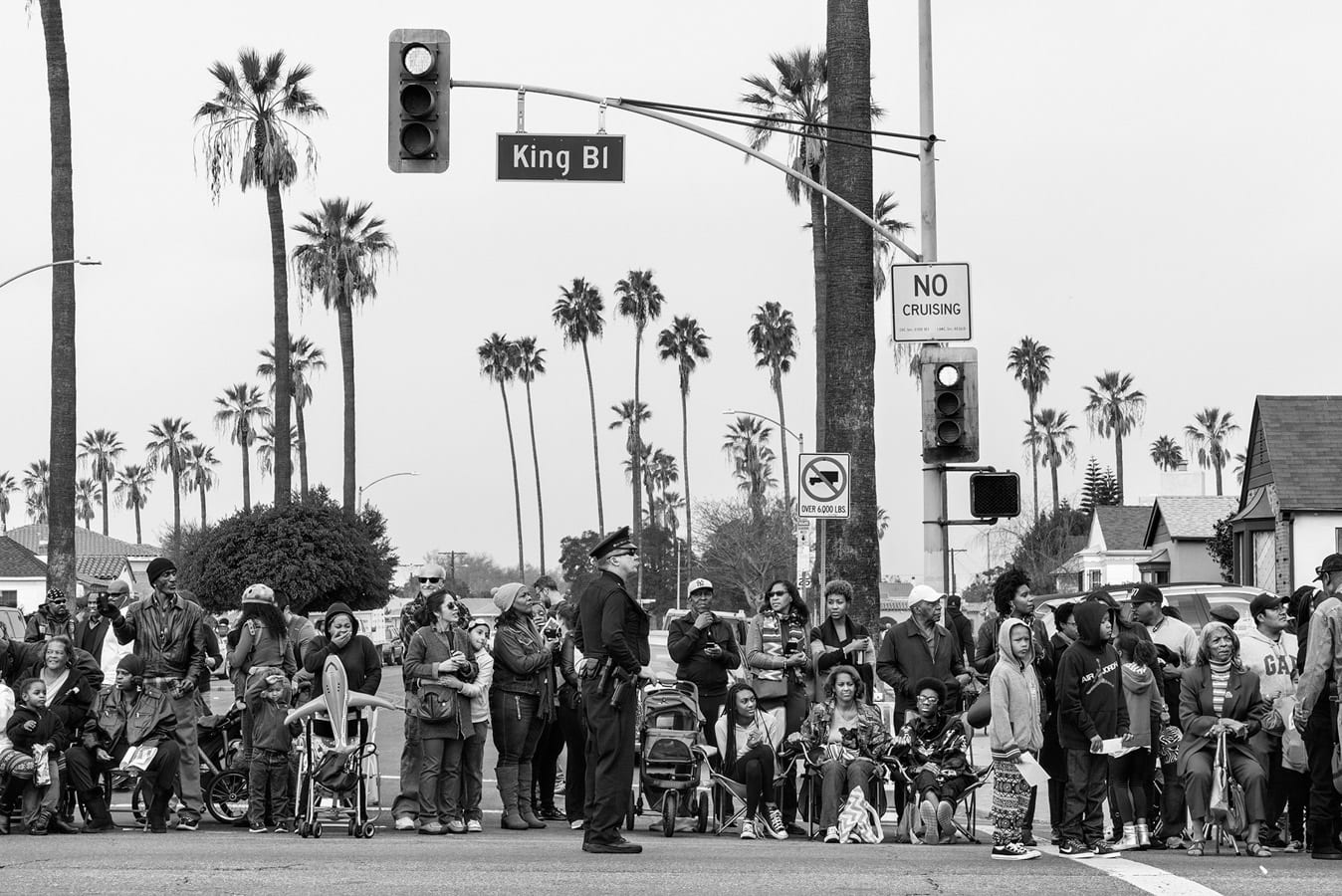
It’s easy to forget the extent to which twentieth century British photography has been shaped by American practice. For a photographer of Georgiou’s generation, raised on American photography, such archetypal images are difficult to avoid. Early on in the project, Georgiou shot material that he knew he would never use. The States is so seductive in terms of images that you know, all of these classic landscapes. … [The early photographs] end up being clichés, but you have to take them… These persistent symbols – landscapes and portraits, most of them shot in a documentary style – are also a cornerstone of American identity, part of the country’s collective psyche. There are only a few images of unpeopled landscapes in Americans Parade. They’re photographed in the cool, vernacular idiom of Walker Evans or the New Topographics: shopfront architecture, suburban bungalows, kerbs and porches, railway crossings and freeway overpasses – America as it’s seen from the road. These landscapes are the frame of reference for every image in the book. If you were to strip each one of the pictures to its bare bones, this is what would be left behind: perfectly composed, recognisable yet nonspecific places. Every image is different, but they’re united by a common feature: the strip of asphalt running along the bottom of the frame – a detail that’s easily overlooked, but somehow, quintessentially American.
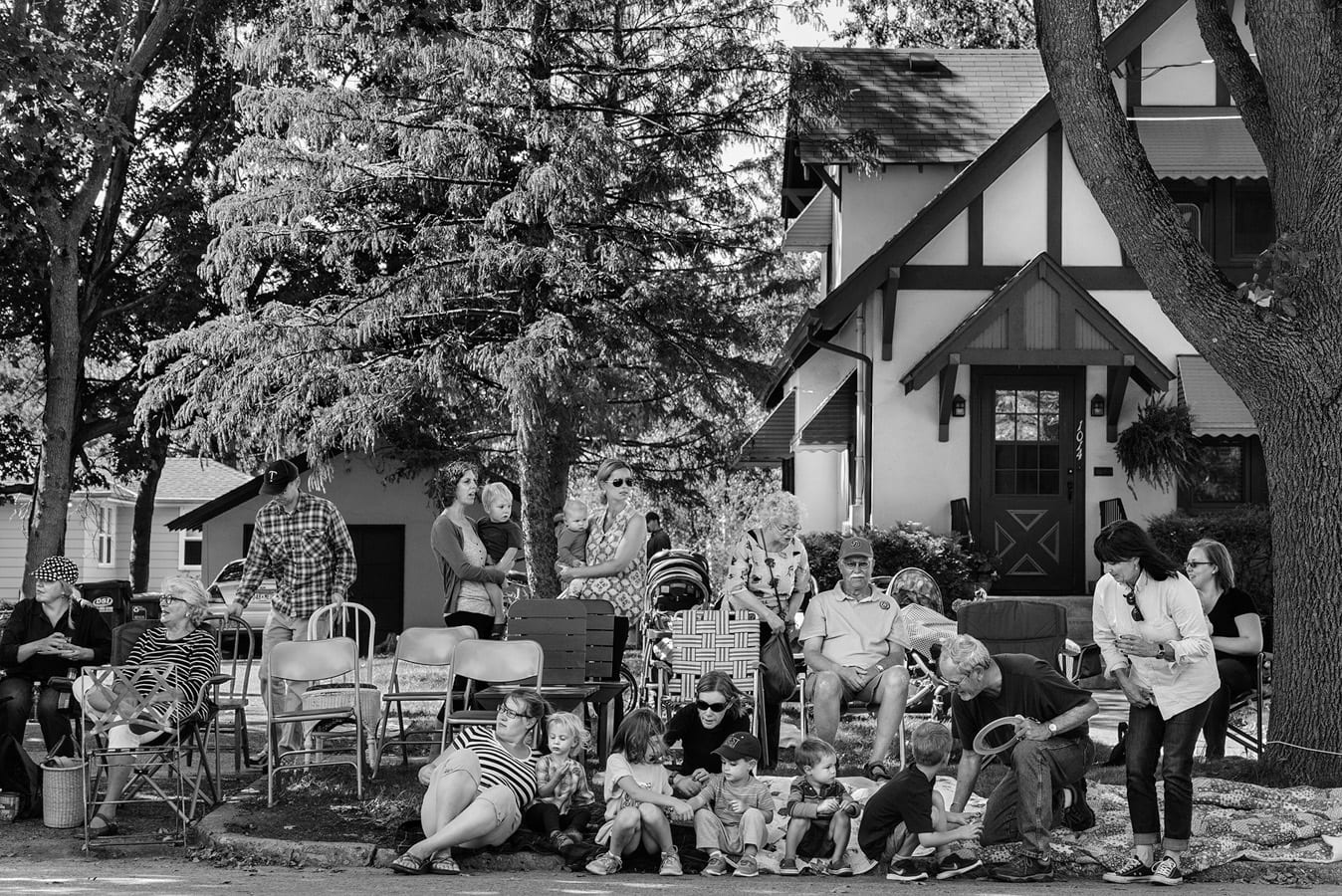
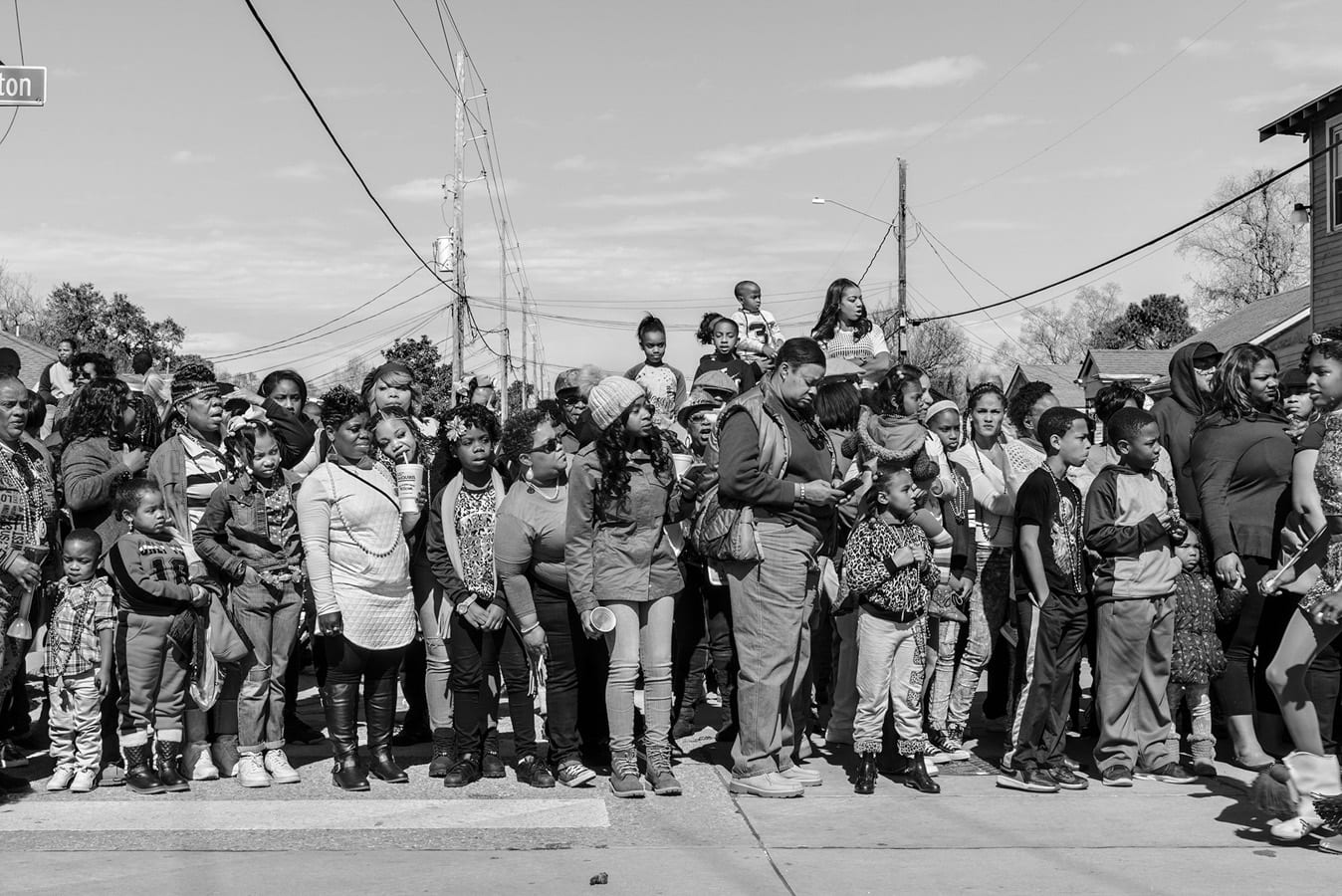
Many of Georgiou’s images also hint at the kind of darkness captured by photographers like Robert Frank and Diane Arbus. Amidst mid-twentieth century optimism and post-war hubris, their work proclaimed America’s open secret: the collective anxiety and alienation of a society that was badly broken. Georgiou doesn’t single out individual subjects in the way that Frank and Arbus did, but the group portrait invites comparisons, encourages the viewer to compare the fair and the fortunate with the less well-favoured. Alongside excitement and anticipation, some of Georgiou’s subjects have other emotions written on their faces: boredom, disillusionment, and occasionally, what looks like despair. They’re an ironic counterpoint to the right’s promises to ‘make America great again’, a reminder that the systemic failings that blighted the prosperity of the post-war years have never really gone away.
Other, earlier pictorial forms were also on Georgiou’s mind as he made the work: the monumental tableaux of history painters like Jacques-Louis David, with their human figures arranged for maximum dramatic effect; or the lively genre paintings of the Flemish painter Pieter Breughel the Elder. Georgiou’s photographs have been compared to digital montages, but it’s more fitting, perhaps, to regard them as layered histories, with contemporary reality resting, sometimes uneasily, atop a bedrock of historical tradition and myth.
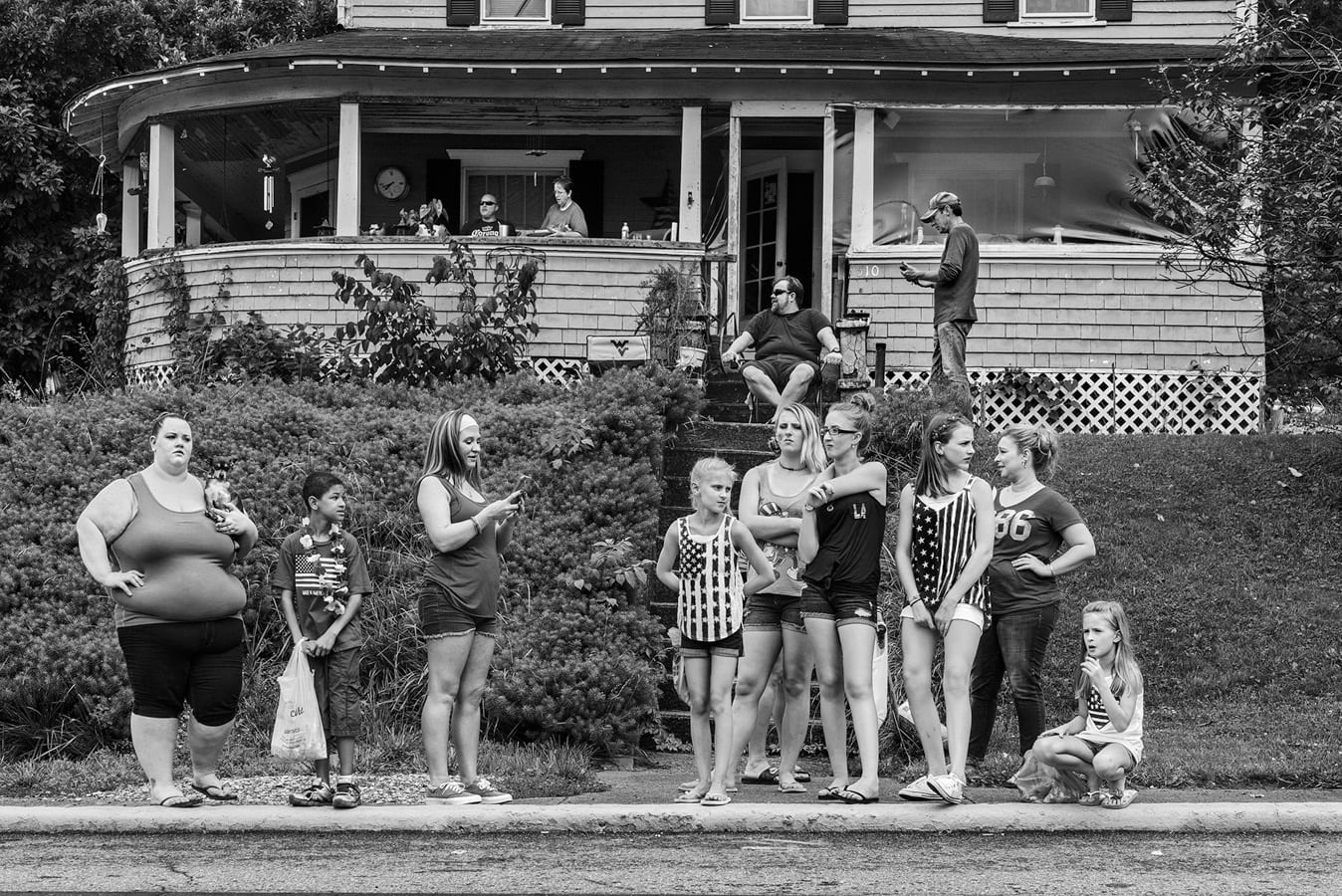
The parade is a staging of these traditions and myths. Some of the occasions – the birth of George Washington, Thanksgiving, the Fourth of July – proclaim values that are widely shared. Others celebrate regional concerns – rodeos, mermaids, cranberries, Ham Day – and some – Martin Luther King Day, Gay Pride – are the subject of ongoing controversy. Minnesota hosted the ‘Defeat of Jesse James’ parade – they’d run him out of town and shot a couple of his gang members. A few days later, I was at a parade in Kansas, and they were celebrating Jesse James, because that’s where he was from. If the parade is an occasion for communities to come together, it’s also a stark portrayal of how deeply divided the country is. Statistically, racial diversity in America is one the rise, but Americans Parade shows clearly how many communities are still partitioned into distinct demographics: white, African-American, and Latino. And where segregation isn’t enforced geographically, Americans often impose it on themselves: at the Macy’s Thanksgiving Day parade in New York City, African-American spectators gather behind the metal barrier at street level, while the white audience seat themselves on a low hill behind them. The most diverse places turned out to be those that were united by other circumstances, such as poverty and deprivation. The places that really surprised me were Appalachia, these ‘redneck’ states that everyone goes on about, Kentucky, West Virginia. I saw much more racial integration. They’re mostly lower income communities.
One of the most powerful pictures in the book contains a single central figure. Amidst the crowds gathered for the Macy’s Thanksgiving Day Parade in New York City, a fashionably dressed woman sits atop a stepladder on an empty section of sidewalk, taking a photograph on her phone. She’s got the bone structure of a 1950s Vogue model – all cheekbones, perfect teeth and sharp jawline. Everything about her – her smile, her clothes, her posture – suggests an unwavering confidence about her position in the world. For me, she was the one percent … that international super-class. Her clothes, everything about her, even the way the creases of her trousers are. I like the fact that the janitor’s brought out the ladder for her. Everything about her is almost timeless. The section of pavement she’s sitting in is blocked off to the rest of the public. She was almost entirely on her own in that space.
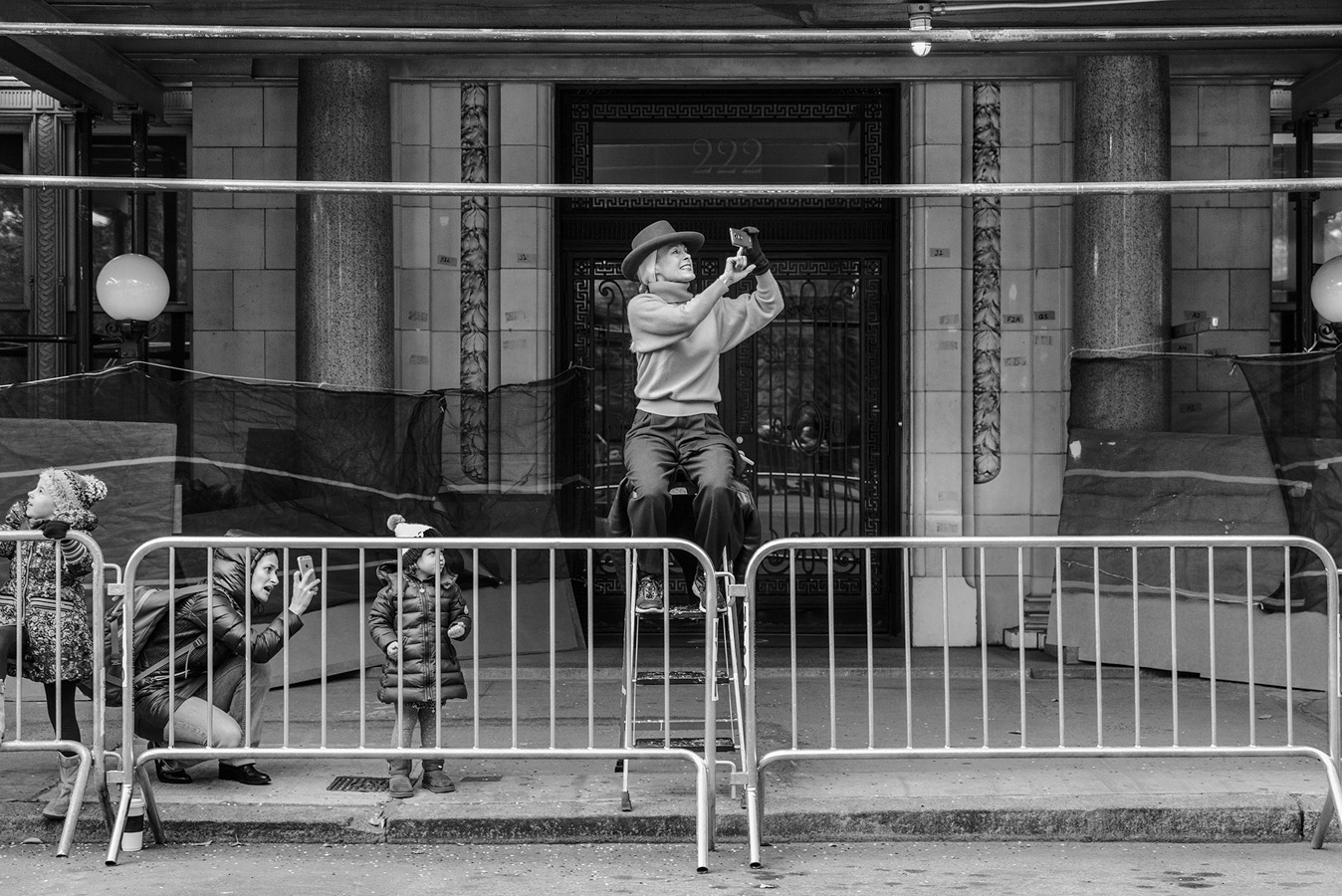
Georgiou’s pictures are remarkable in many ways, but one of the most singular things they demonstrate is how unusual it is to see people out on the street at all. A nation increasingly locked away in its cars, isolated behind its screens, estranged from its neighbours, seems to have lost sight of one of its most basic civil liberties: the freedom of assembly as it was set out in the Bill of Rights. Americans Parade shows how insidiously this freedom has been compromised – how something as fundamental as occupying space has become a matter of entitlement, set out along the lines of race and class.
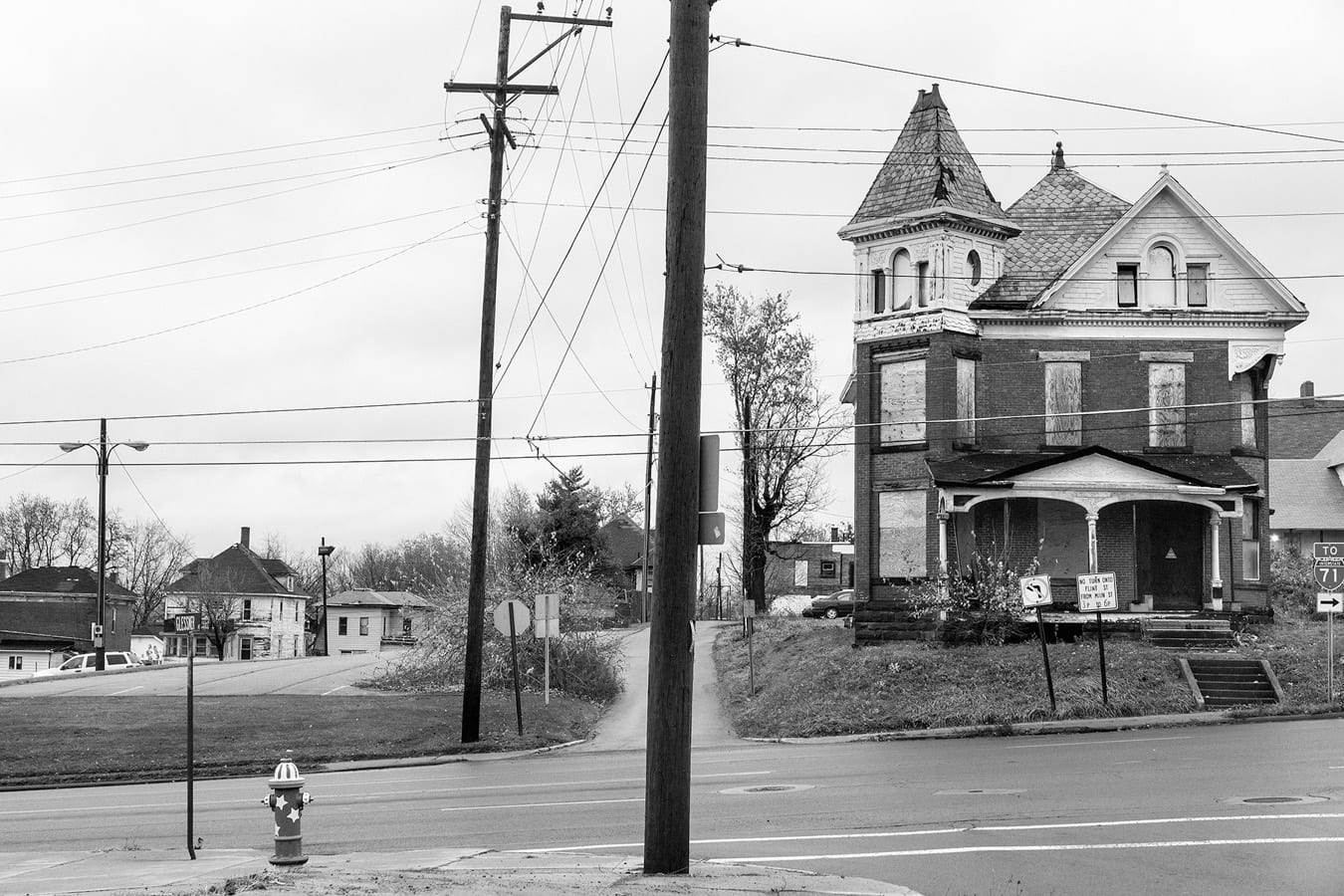
There’s been a good deal of speculation about what might change when the pandemic is over, when the lockdown is lifted and we can return to our normal lives again. Much has been made of the renewed sense of community that it’s brought about, at least here in the UK. In America, the outbreak has exposed massive fault lines in the country’s leadership, reinforced partisan divisions, and ramped up the fear and xenophobia that are the weapons of the political right. It’s said that the coronavirus doesn’t discriminate, but many of the low-income communities that Georgiou photographed have been hit disproportionately hard. America’s sense of community and collective identity may turn out to be one of the pandemic’s biggest casualties. But Americans Parade gives us a glimpse of a country that is still united, even if only occasionally and temporarily. Most of the communities that you’re looking at are people just trying to get on in life. They’re not so alien from each other. Georgiou’s photographs may not tell us who America is as a nation, but they offer up the hope that the shared ideals that define nationhood may yet exist again.
George Georgiou
Self-published
(All Rights Reserved. Text @ Eugenie Shinkle. Images @ George Georgiou.)
